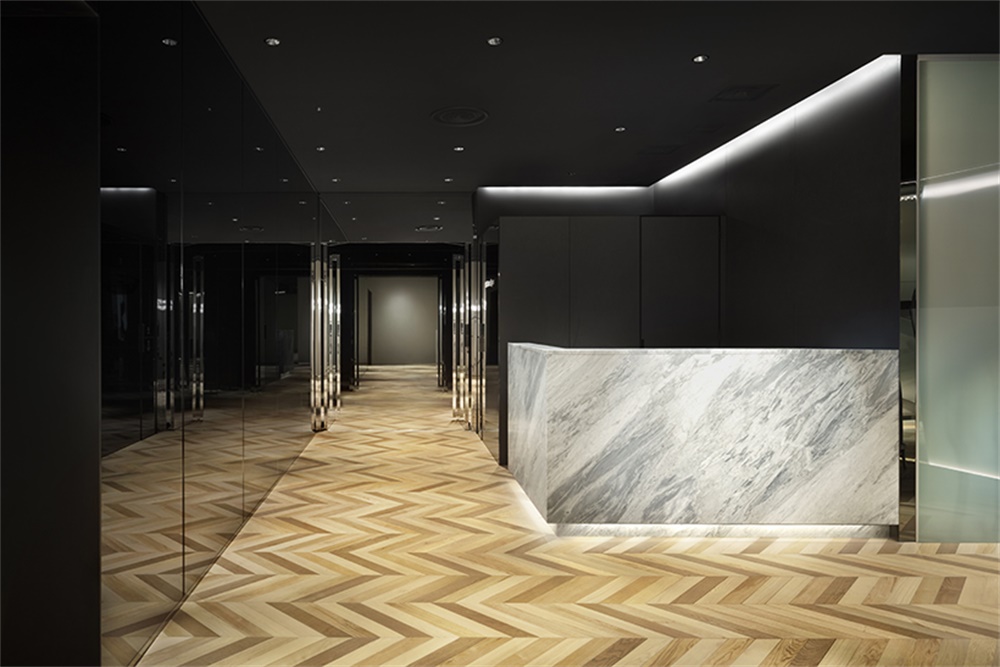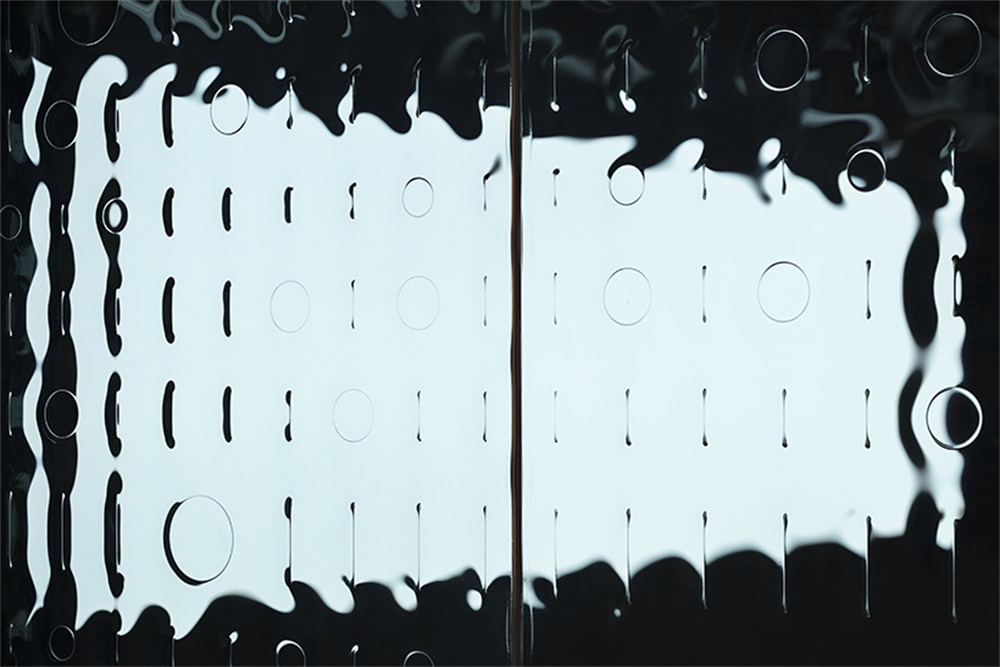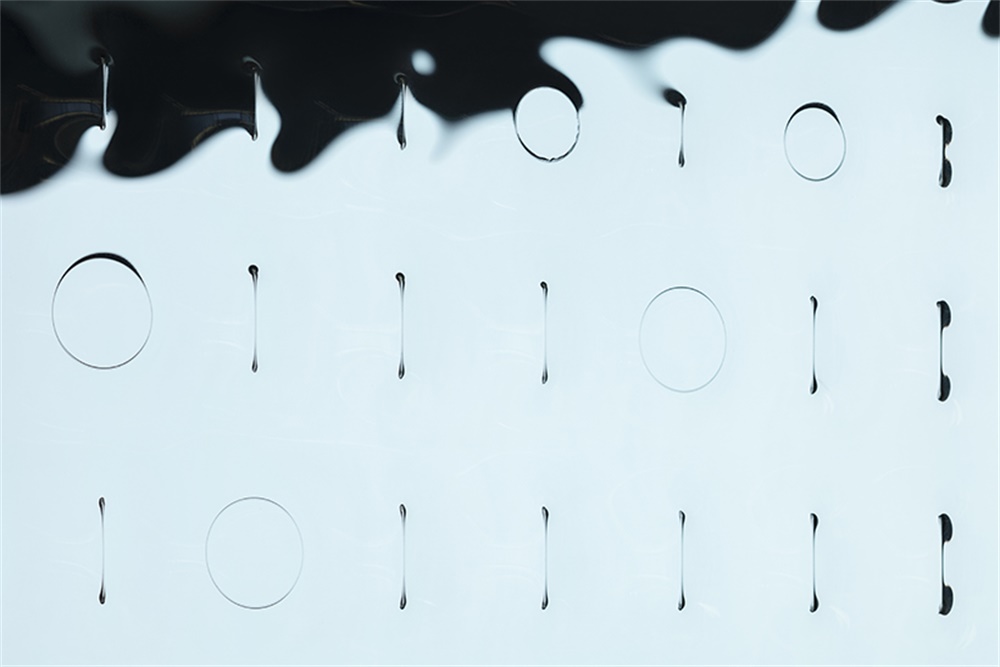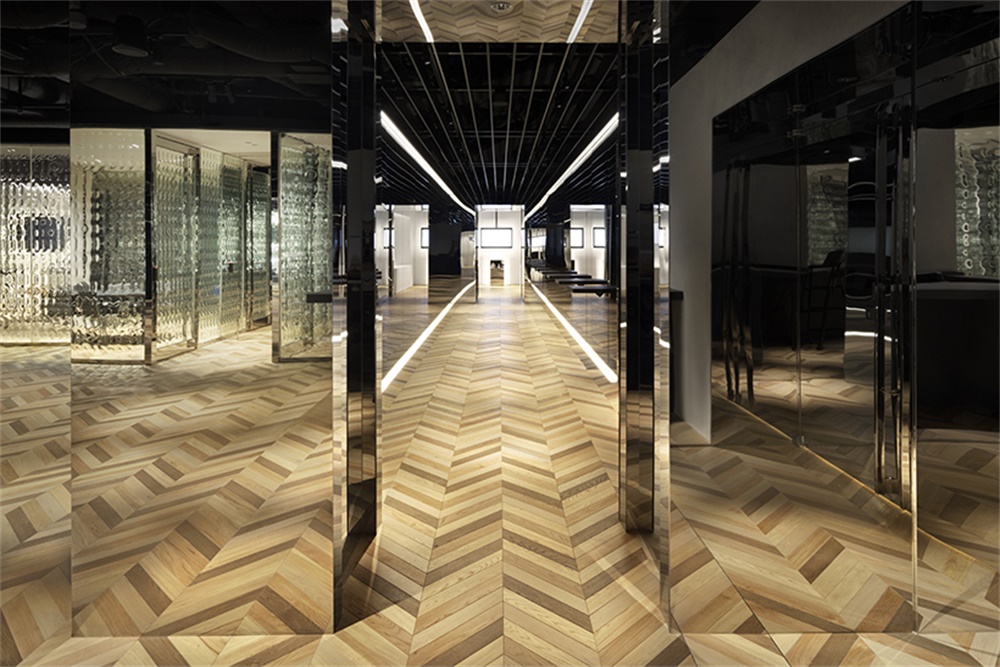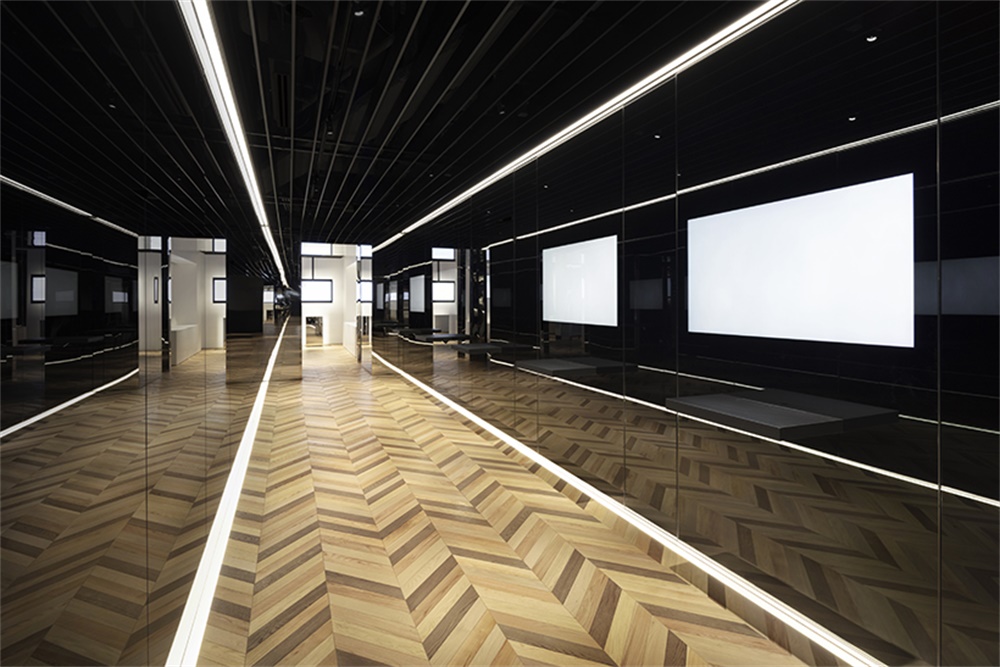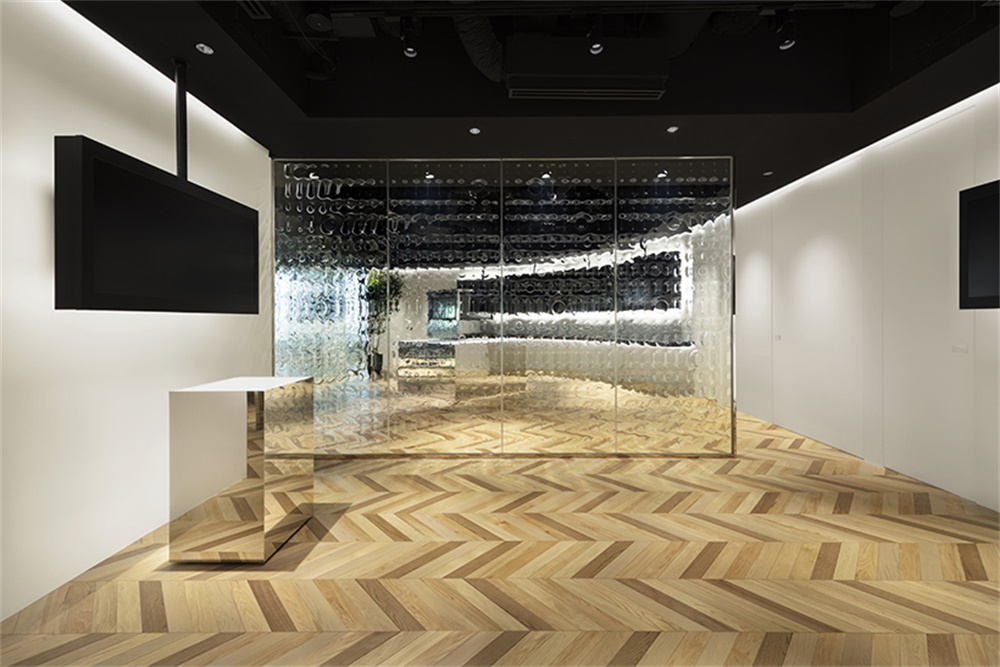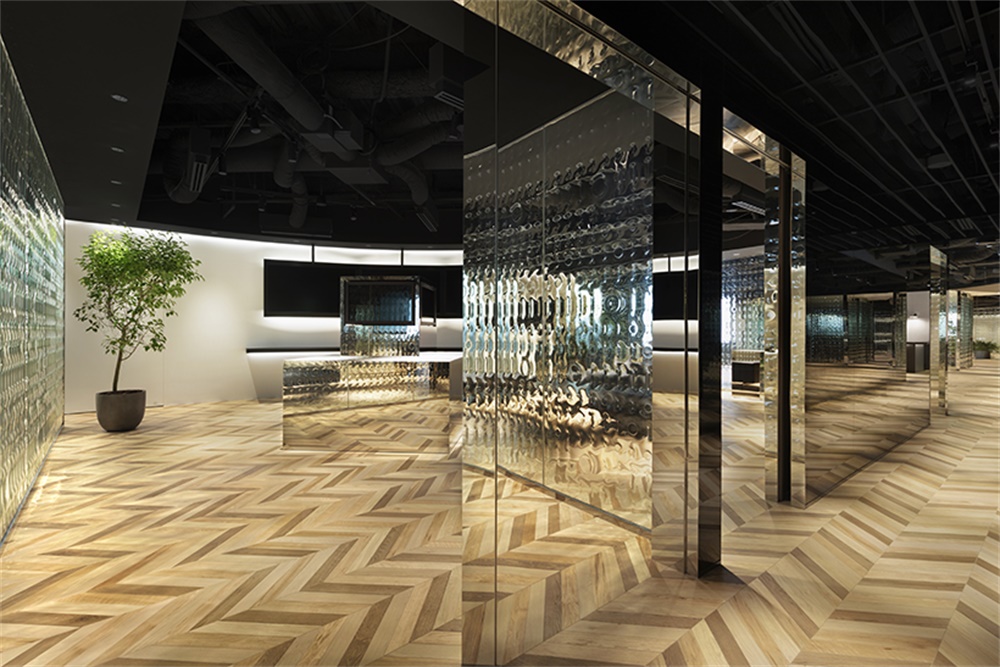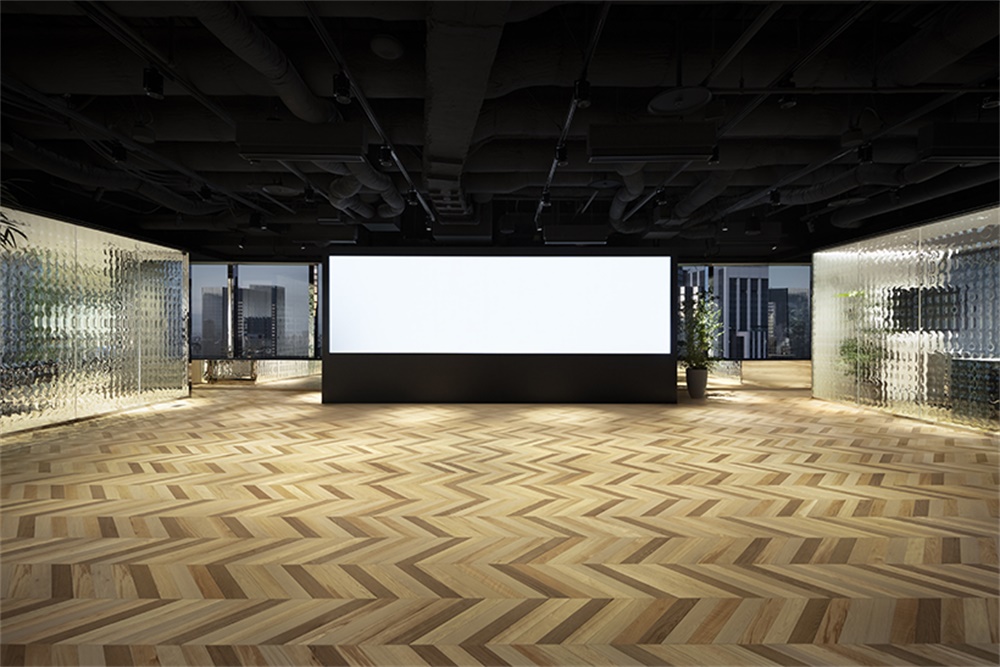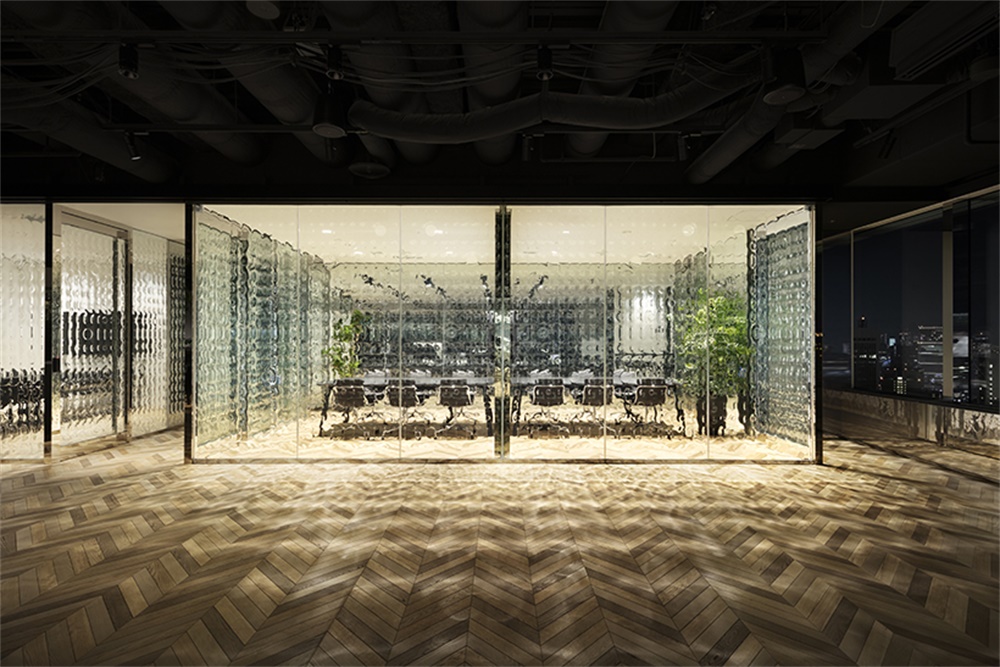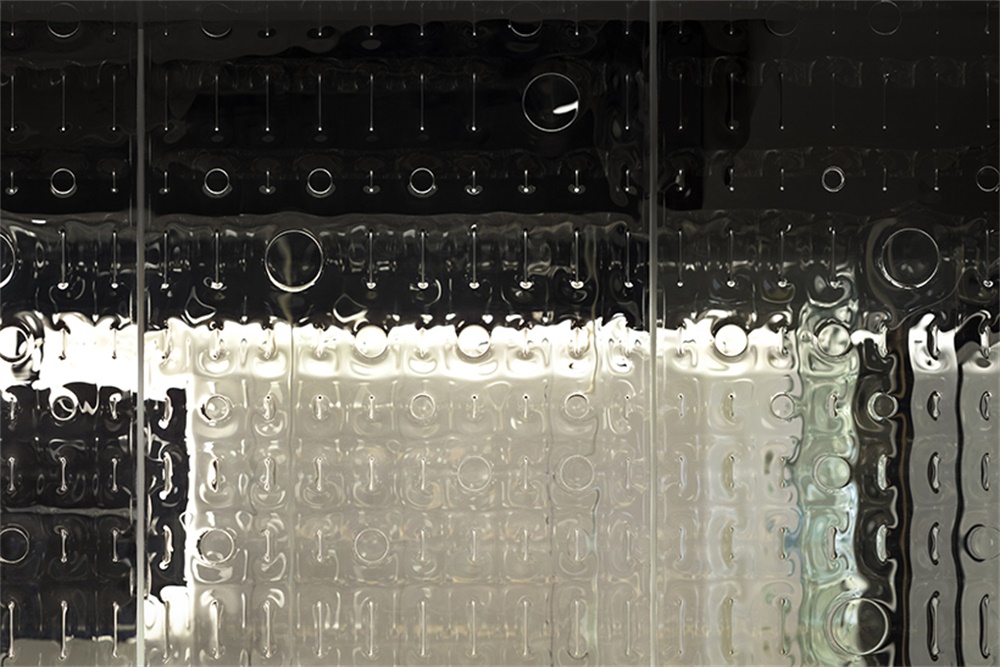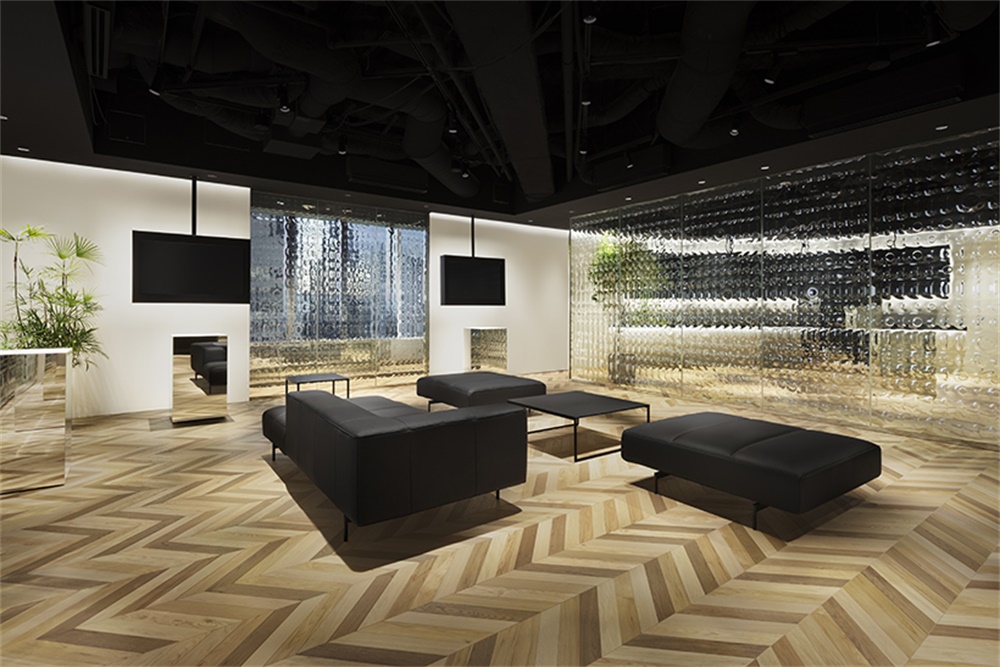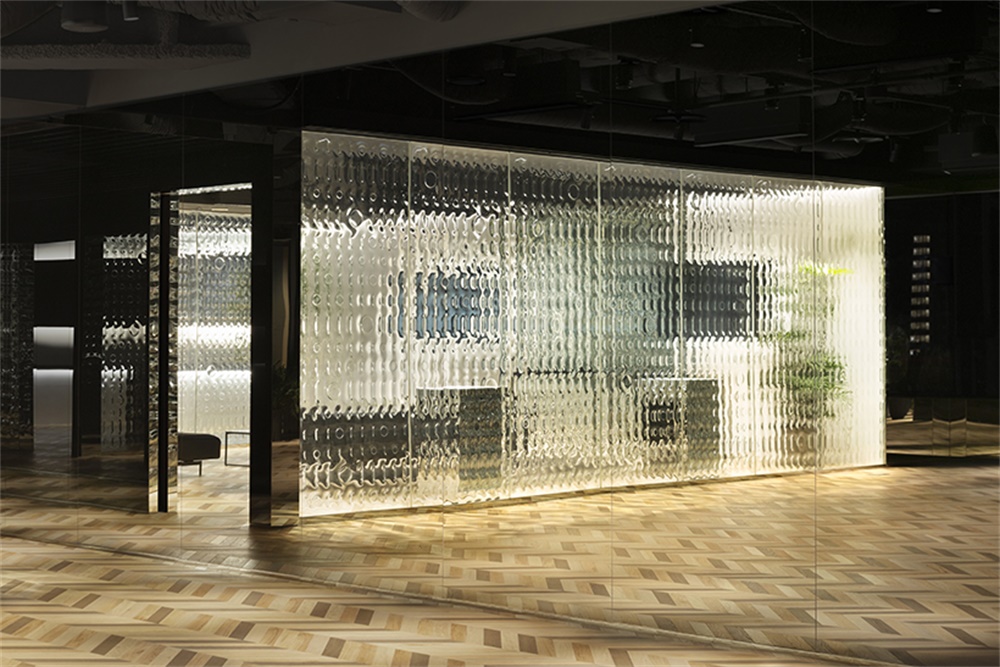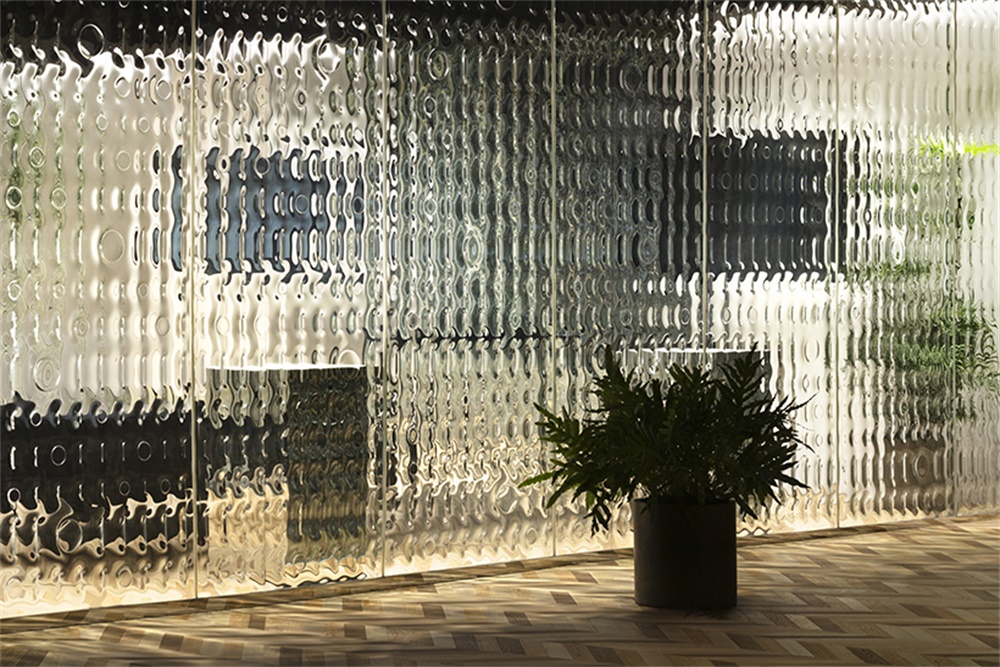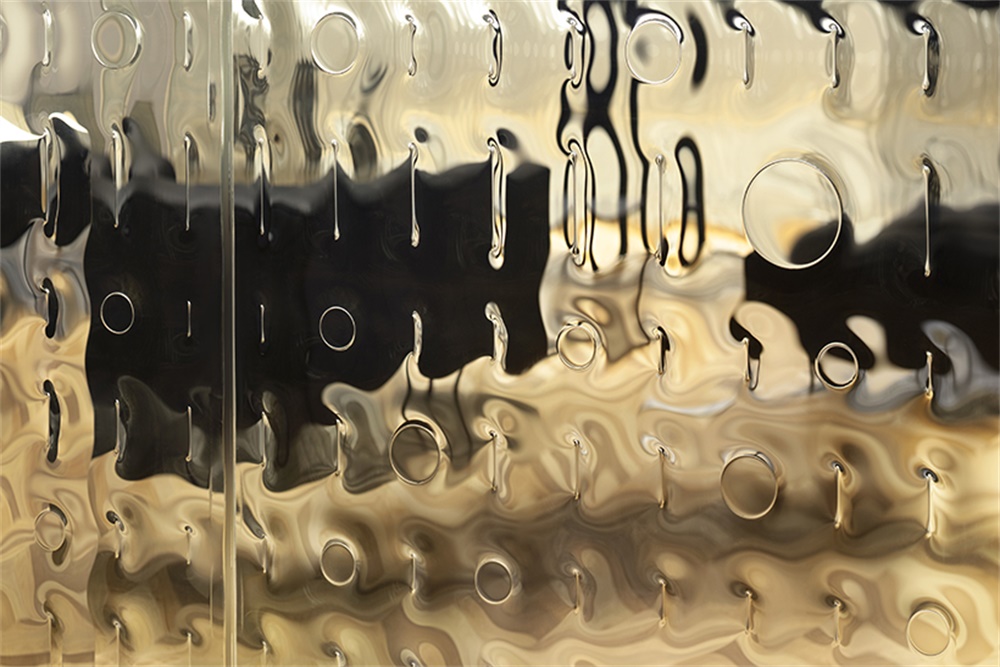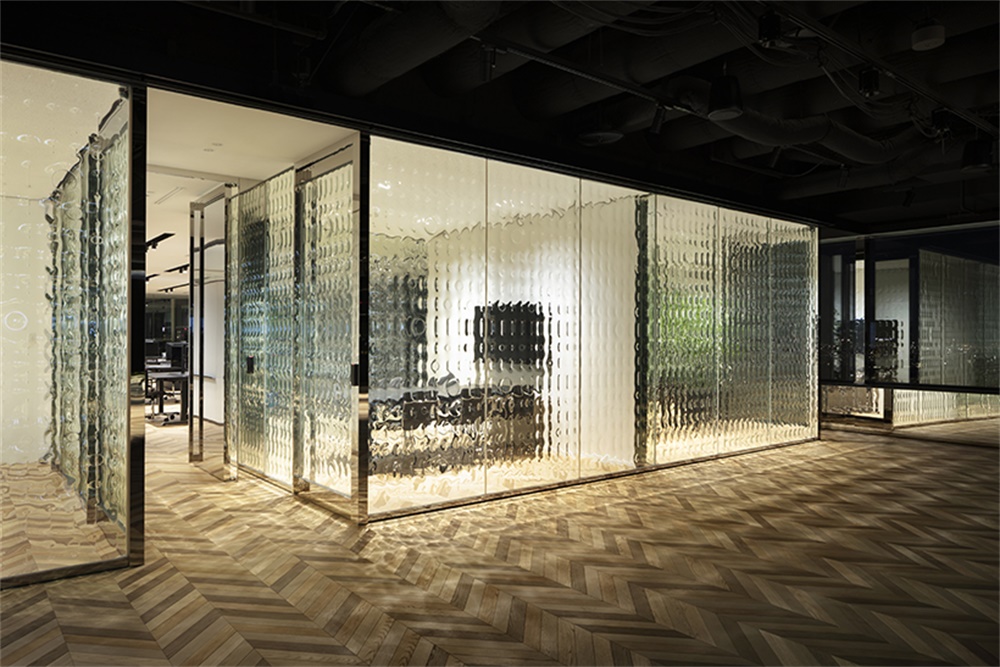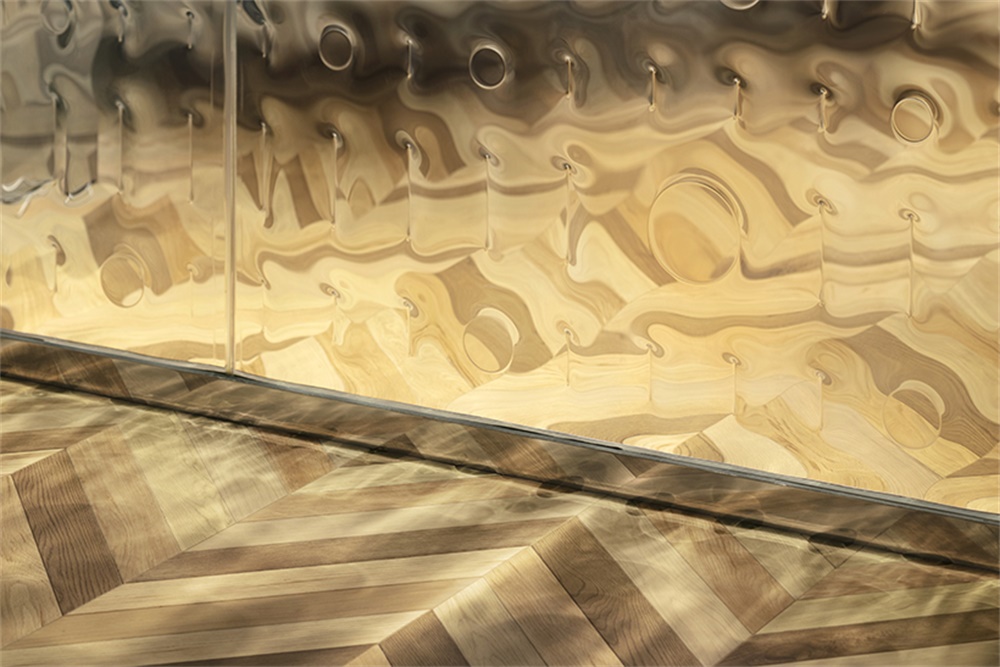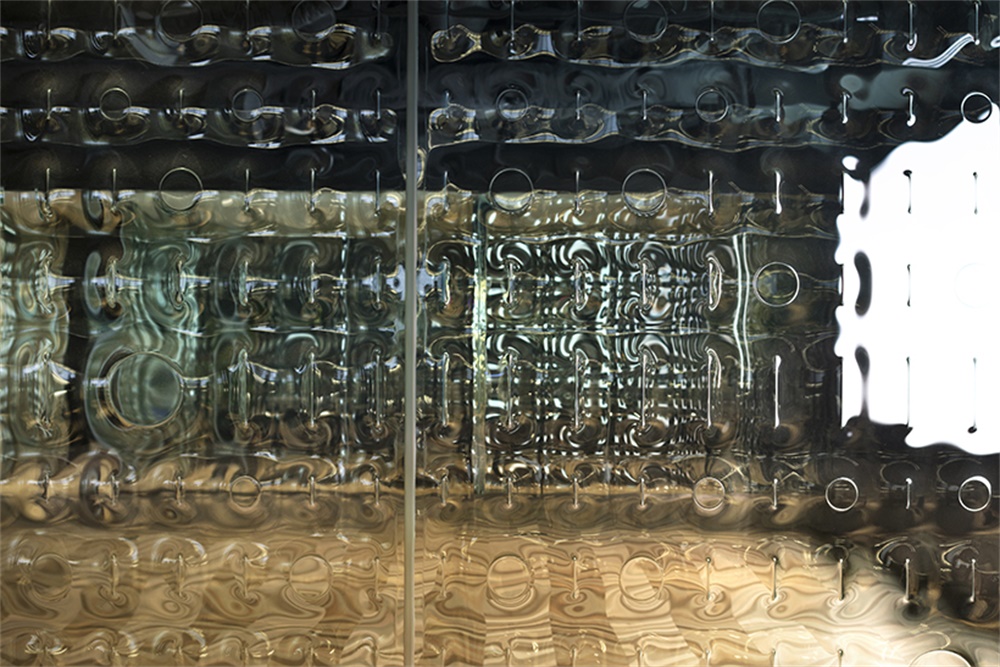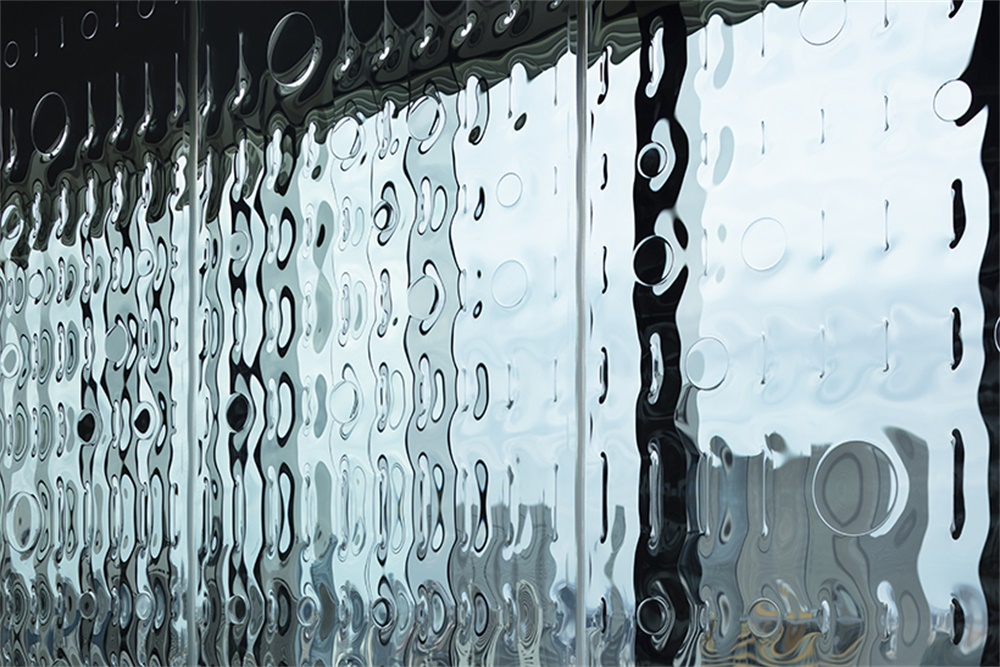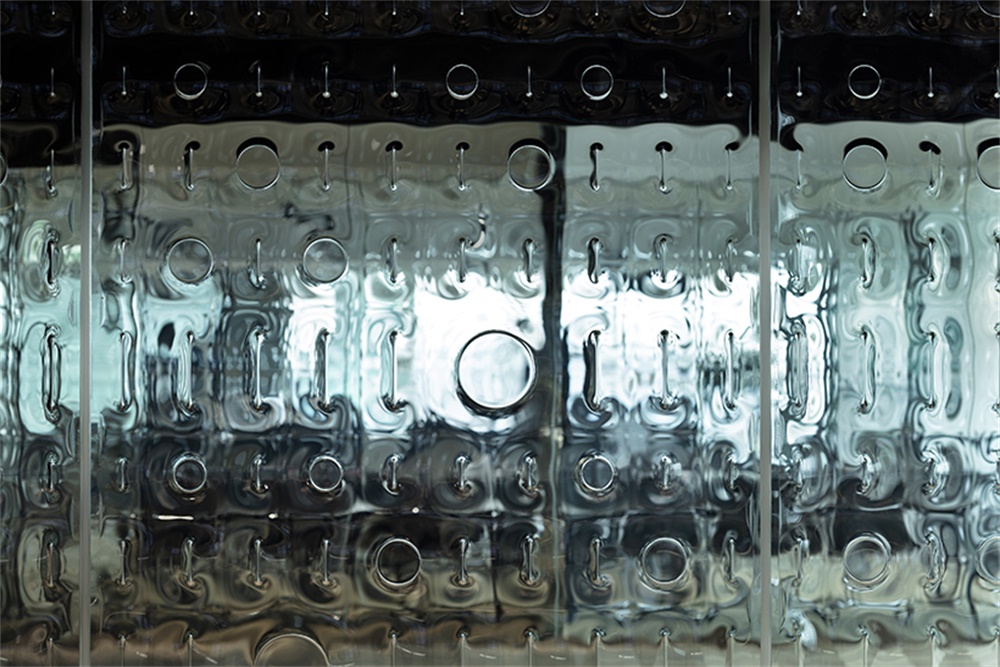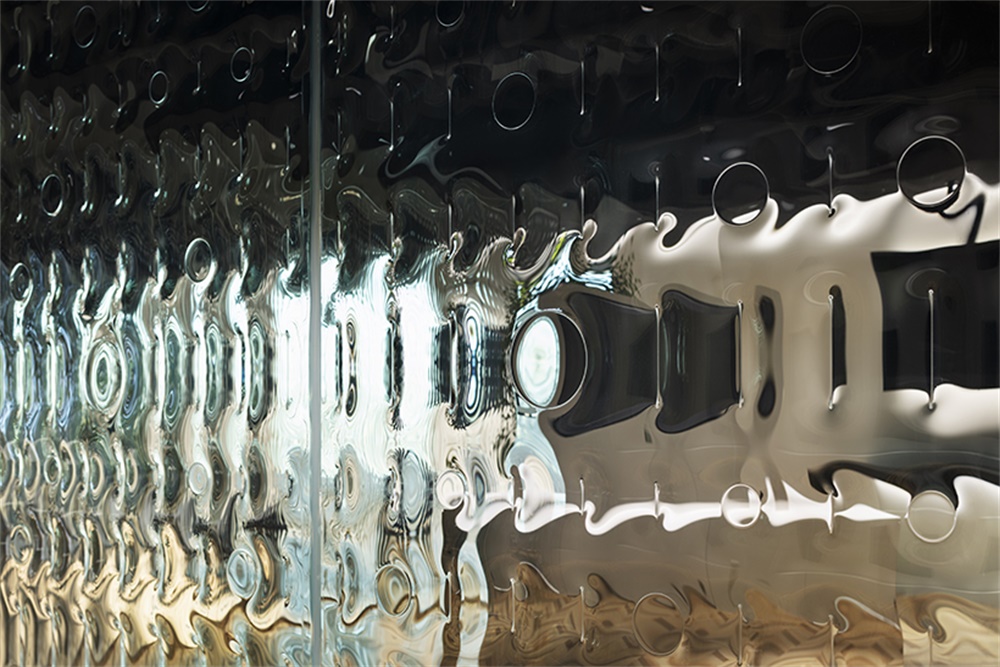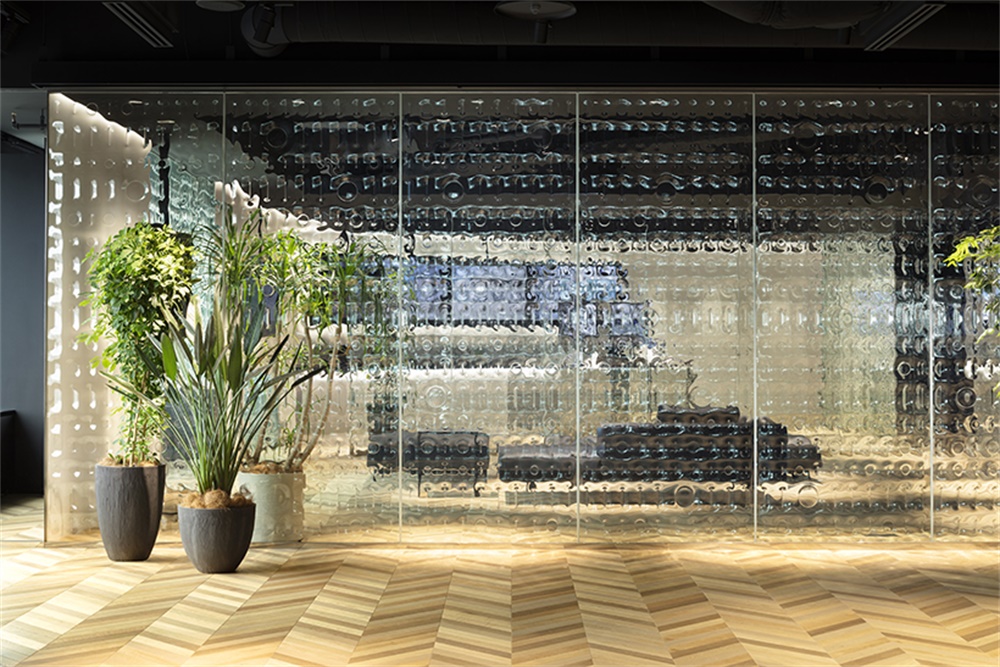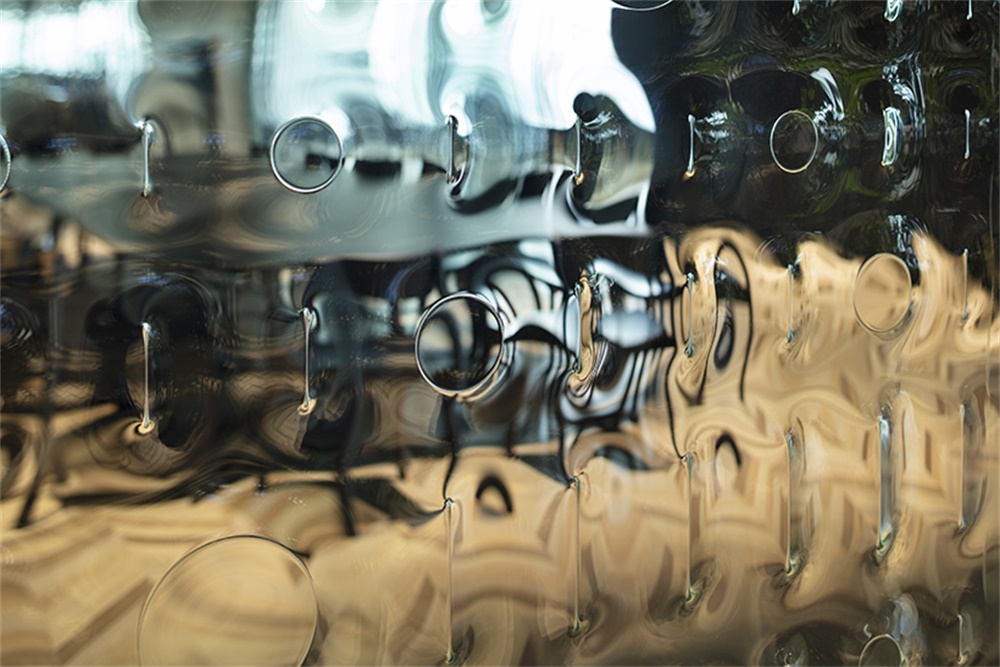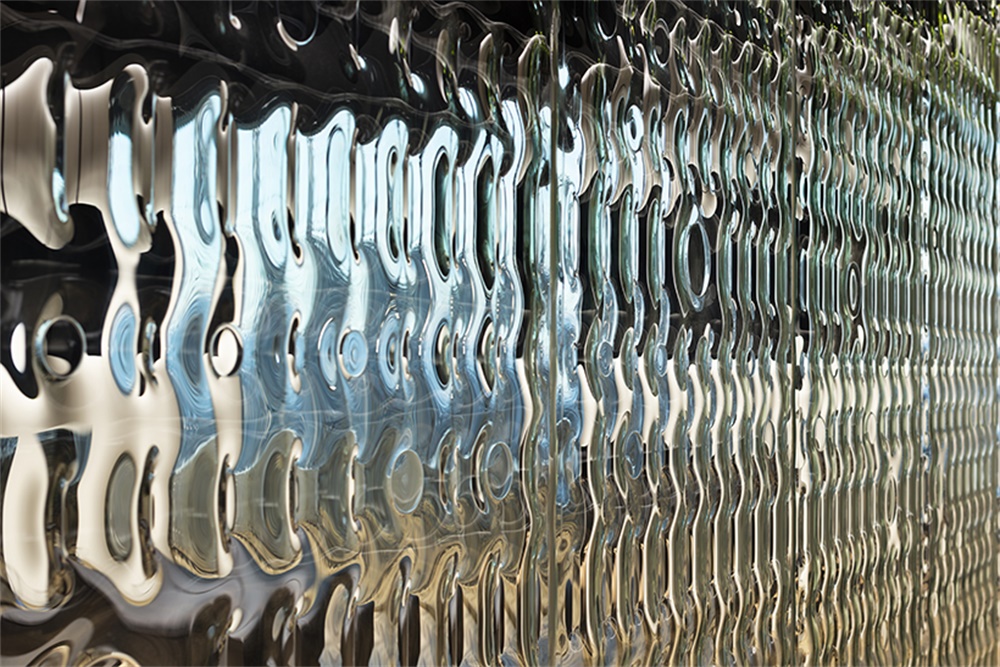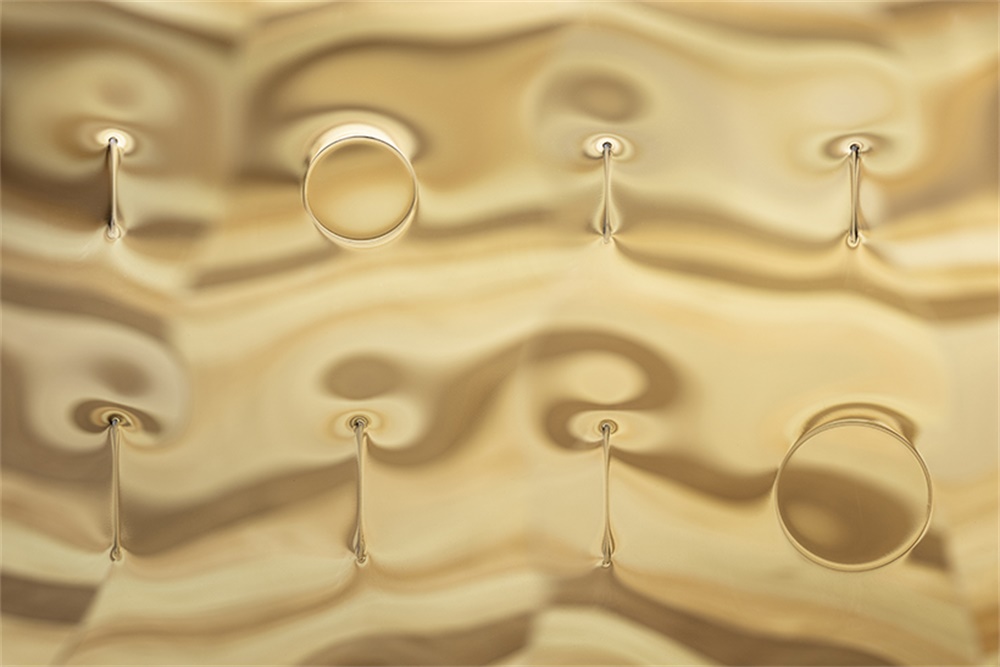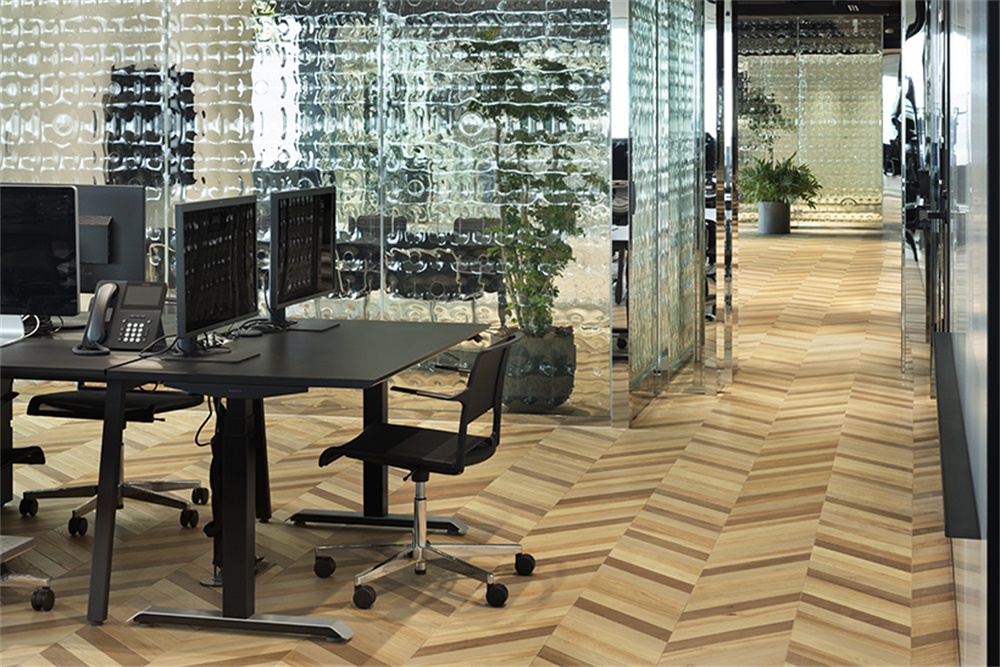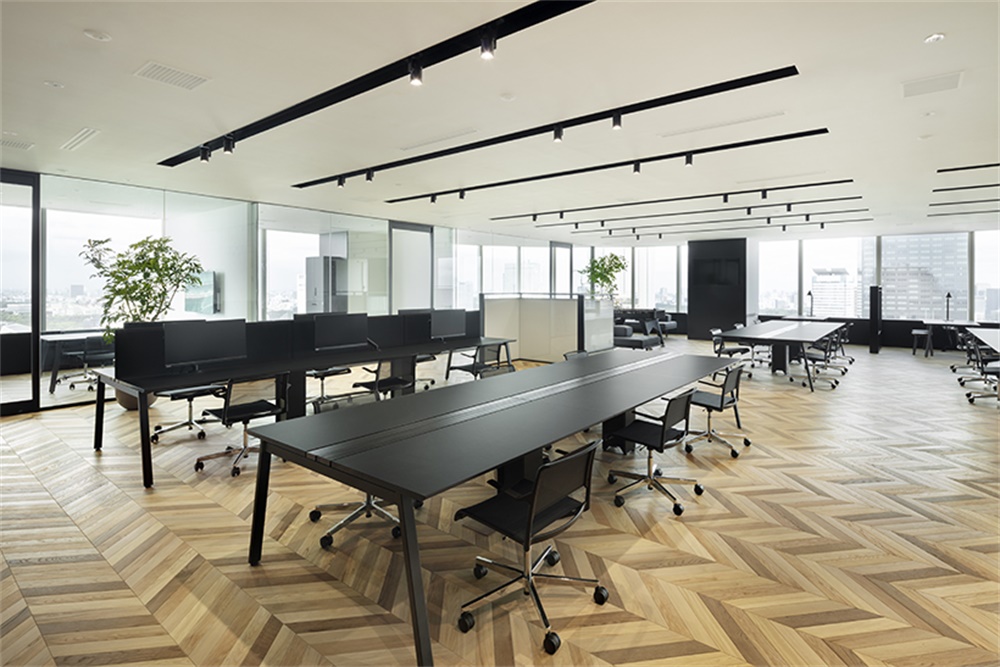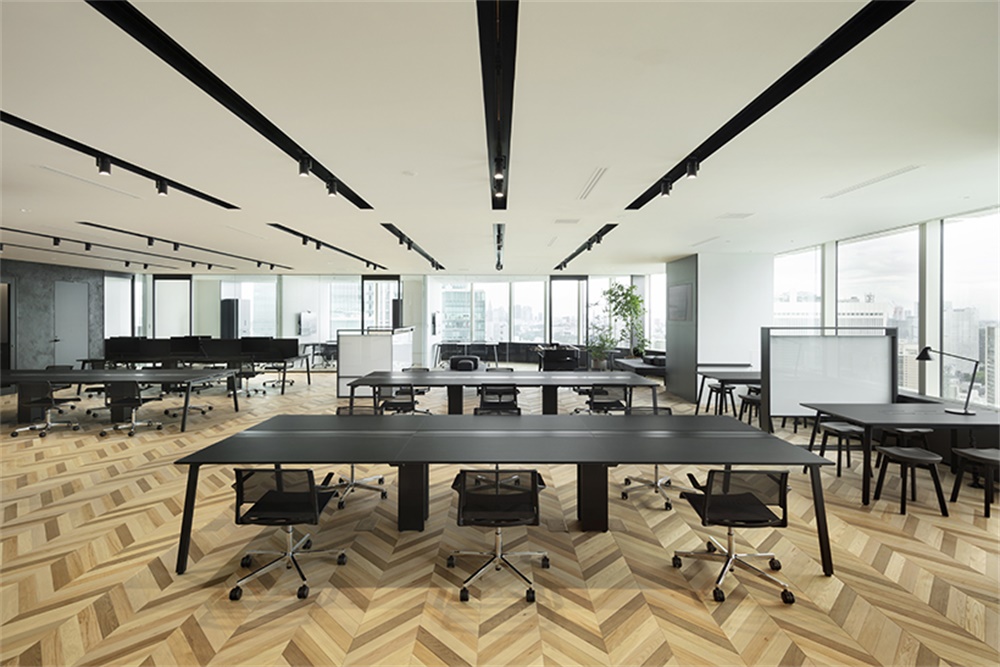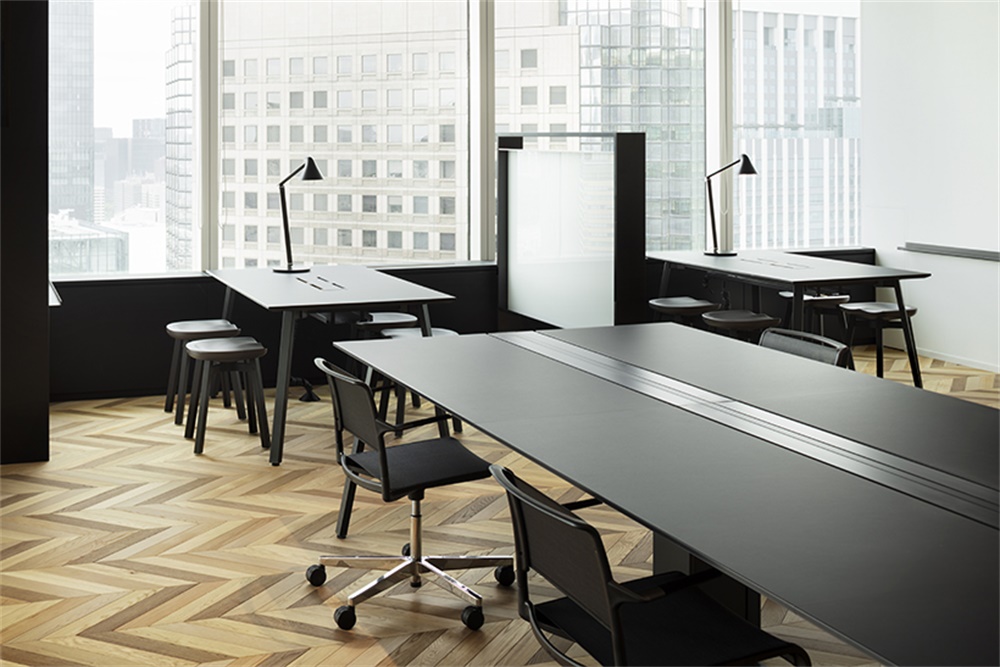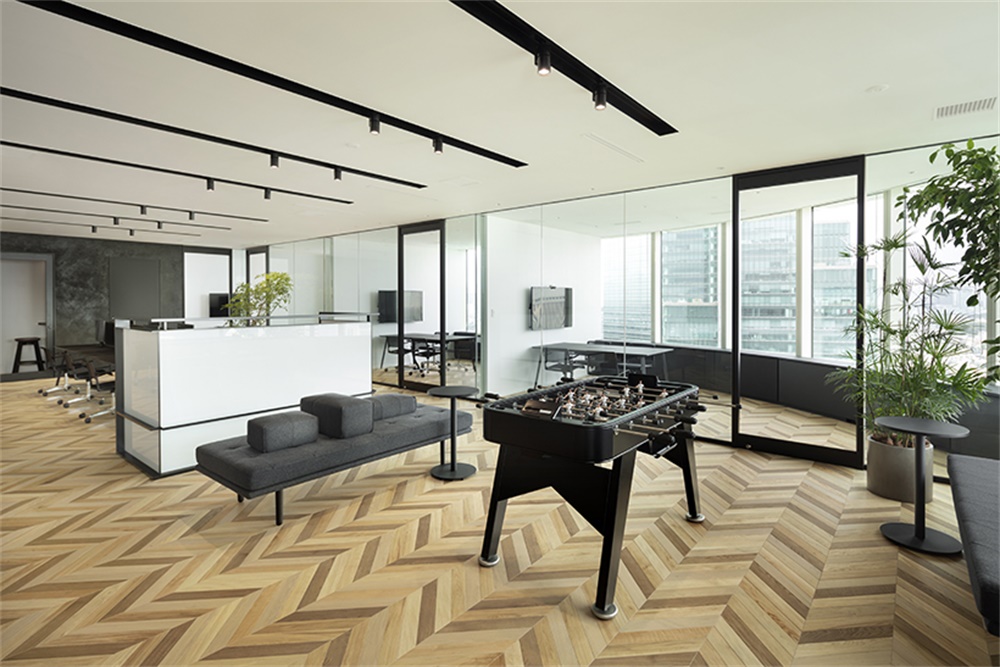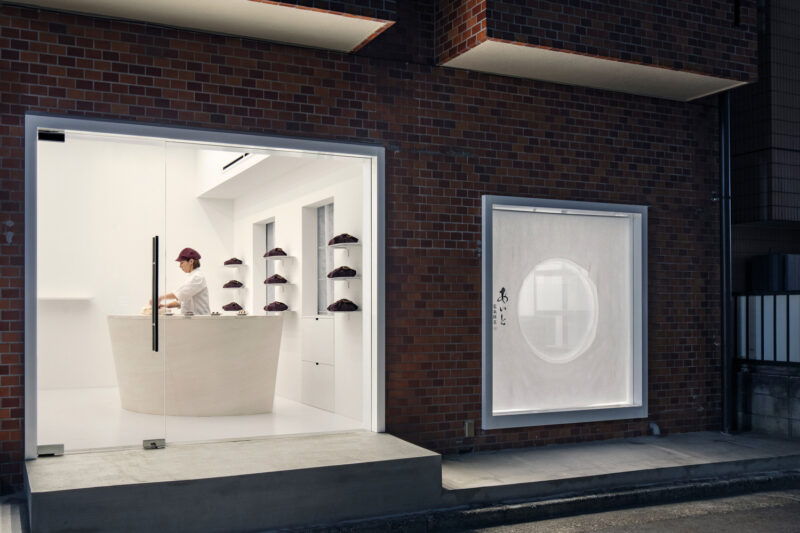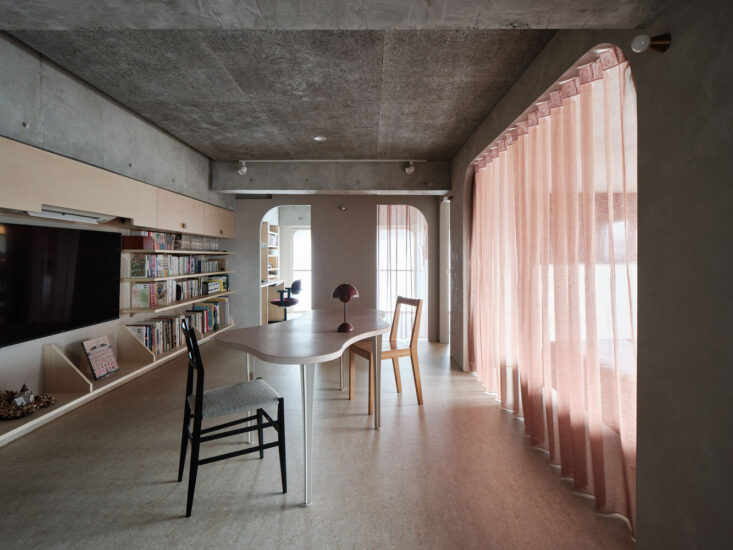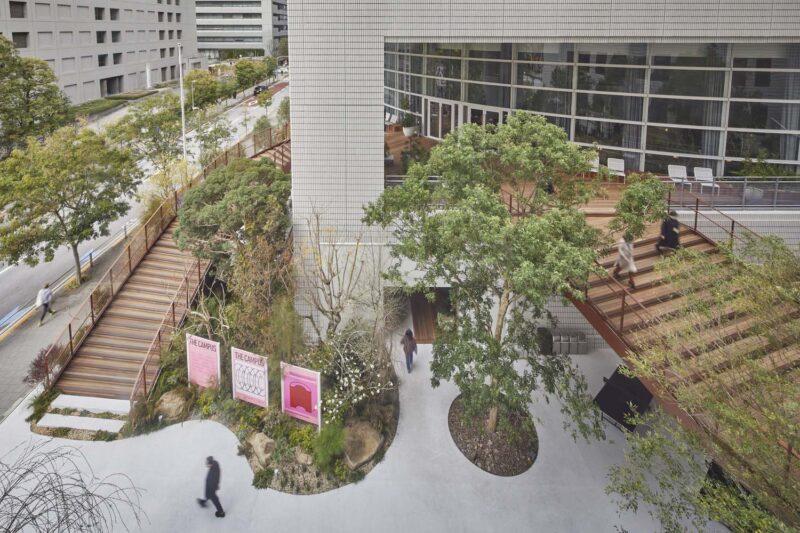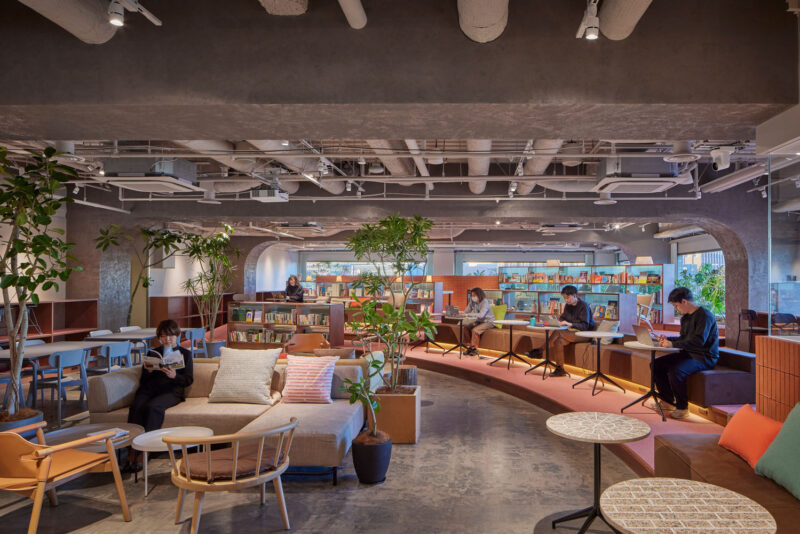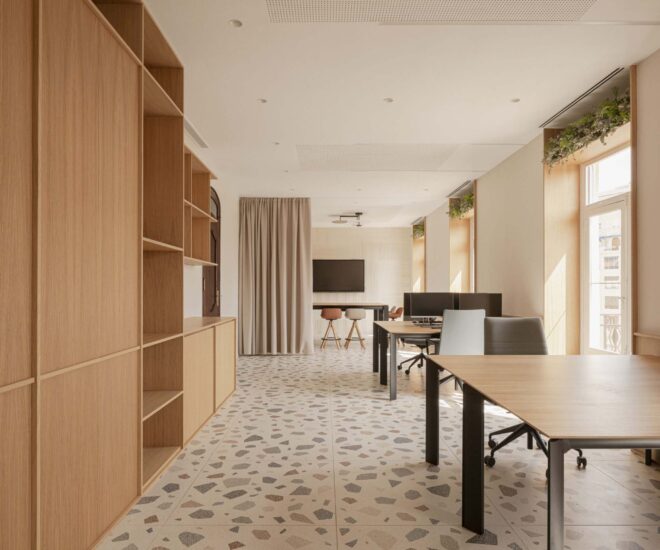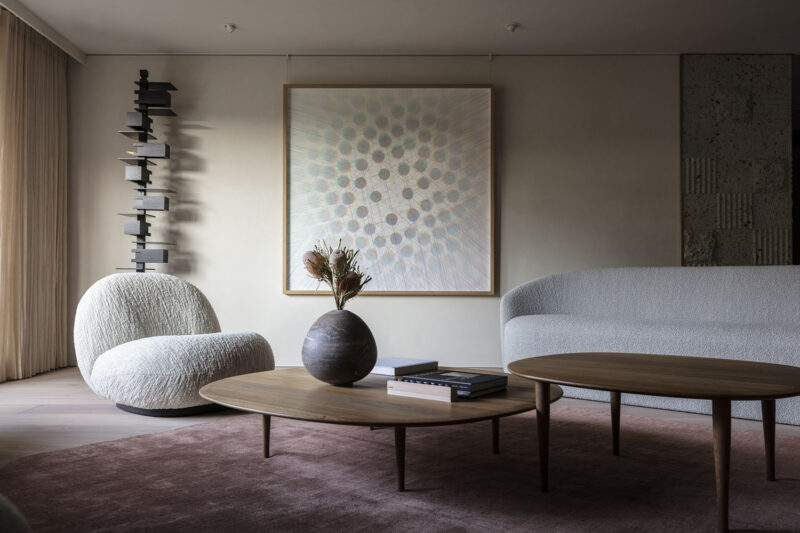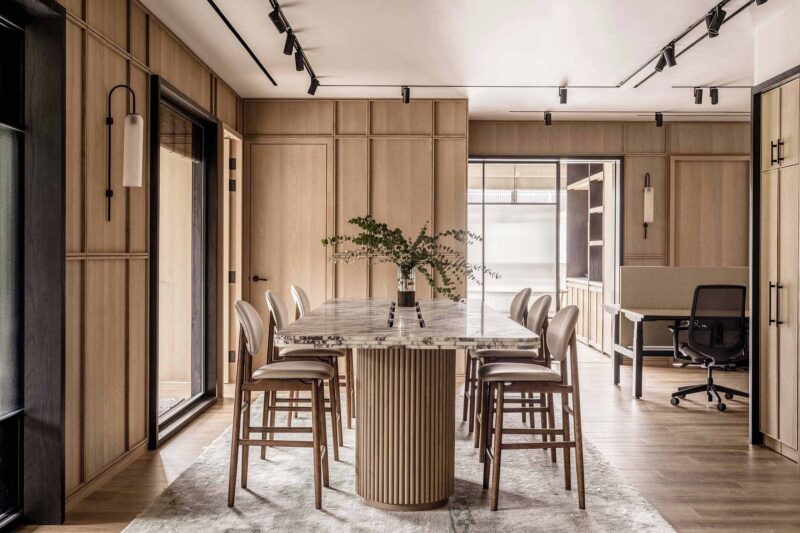外資係顧問公司東京辦公室新成立的物聯網中心(IoT Center)的室內設計由nendo設計。該中心有三個展廳和一個展示新數字技術的休息區,一個舉辦研討會和活動的多功能空間,以及會議室和工作空間等辦公區域。
The interior design of the newly established “IoT Center” in & Company’s Tokyo office. The Center has three galleries and a lounge area to showcase new digital technologies, a multipurpose space to hold seminars and events, as well as office functions such as meeting rooms and a work space.
在數字世界中,每條信息在存儲和複製之前都被轉換成“0”和“1”的組合,室內由透明的玻璃隔板構成,隔板的表麵由“0”和“1”構成。
Derived from the fact that in the digital world, every piece of information is converted into combinations of “0” and “1” before it is stored and reproduced, the interior was formed by transparent glass partitions that has a textured surface made of “0”s and “1”s.
首先,為了保證抗拉強度,使用兩層結構的夾層玻璃,並在兩層玻璃之間插入了四層薄膜,以達到防碎效果。通過將玻璃板放置在不鏽鋼模具上並向玻璃加熱以使其軟化,從而將圖案應用於因自身重量而偏轉的脫模玻璃上,從而形成有紋理的表麵。
First and foremost, in order to secure tensile strength, laminated glass composed of two layers was used and four layers of film were inserted between the two glass layers to give a shatterproof effect. The textured surface was formed by placing the glass plate on a stainless-steel mold and applying heat to the glass to make it soft, thereby applying the pattern to the molted glass which deflects by its own weight.
考慮了模具邊緣的各種厚度和形狀,最終,為了最大程度地減少與玻璃的接觸,使用了3mm的銳利拋光邊緣。盡管同時對兩塊玻璃板進行了熱處理,但是一塊玻璃板的厚度為8mm,另一塊玻璃板的厚度為6mm,從而使兩個表麵更精確地連接在一起,並使氣泡的產生最小化。
Various thickness and shape were considered for the edges of the mold, and eventually, in order to minimize contact with the glass, a 3 mm sharply polished edge was used. Although the two sheets of glass were heat processed simultaneously, one sheet was 8 mm thick while the other was 6 mm thick, thereby enabling the two surfaces to be joined more precisely and also enabling the minimisation of occurrence of air bubbles.
另一方麵,由於吸盤其粗糙的表麵而無法在安裝過程中在玻璃板上使用,所以移動和放置吸盤所需的人力是正常情況下的兩倍,這導致了極其耗時的施工。當人們在已完成的空間中漫步時,窗外的景觀展開,展品、植物和遊客的標誌也開始“扭曲”。目的是表達物聯網的未來,數字主義和現實的融合,通過真實和虛擬的圖像和諧地融合在一起。
On another note, since suction cups could not be used on the glass plate during the installation process due to its textured surface, it took twice the man power than normally required for moving and placing them, leading to an extremely time consuming construction. When walking around the completed space, the landscape spreading outside the window and the exhibits, plants and signs of visitors appear in distorted layers. The intention was to express the future of IoT, a fusion of digitalism and reality, through this scenery where real and virtual images are integrated harmoniously.
主要項目信息
項目名稱:外資係顧問公司東京辦公室
項目位置:日本東京
項目類型:辦公空間/辦公室設計
完成時間:2019
設計公司:nendo
合作夥伴:mado, nsz (space) / mit (movie)
攝影:Takumi Ota


